Abstract
The present paper describes a system in vitro that has been developed to mimic vitamin K metabolism and vitamin K function in liver. In this system the two pathways that are known to participate in vitamin K reduction are active and the vitamin K-dependent carboxylase accepts a synthetic pentapeptide as substrate. With this system in vitro the effect of warfarin on both pathways was examined under conditions which simulated a warfarin-poisoned liver. Identical experiments were completed with rat and human liver. All activities currently associated with vitamin K metabolism and vitamin K function were similar in the rat and human systems. Warfarin neutralized the ability of pathway I (the vitamin K epoxide reductase pathway) to produce reduced and active vitamin K cofactor for the carboxylase. In both the rat and the human system, however, when warfarin was present, reduced vitamin K cofactor was produced by pathway II (the dehydrogenase pathway). The data are consistent with observations in vivo on the effect of vitamin K1 when used as an antidote. This suggests that the system in vitro reflects the mechanism in vivo by which vitamin K1 overcomes warfarin poisoning.
Full text
PDF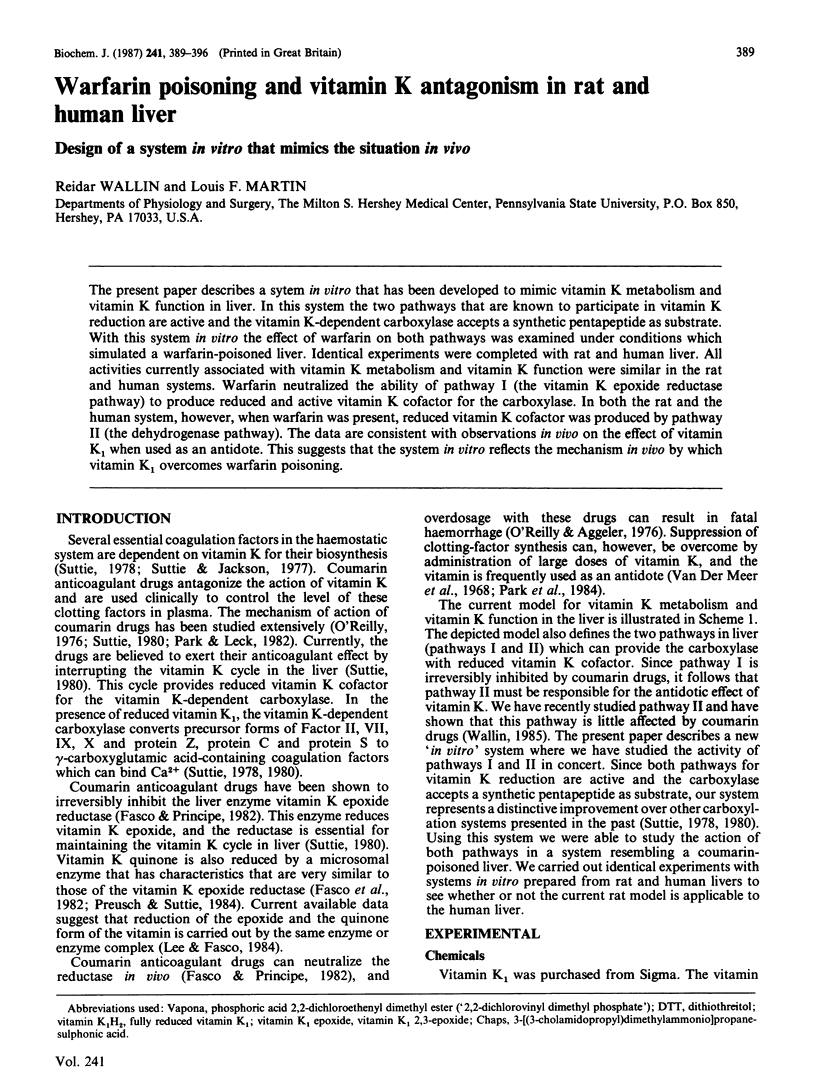
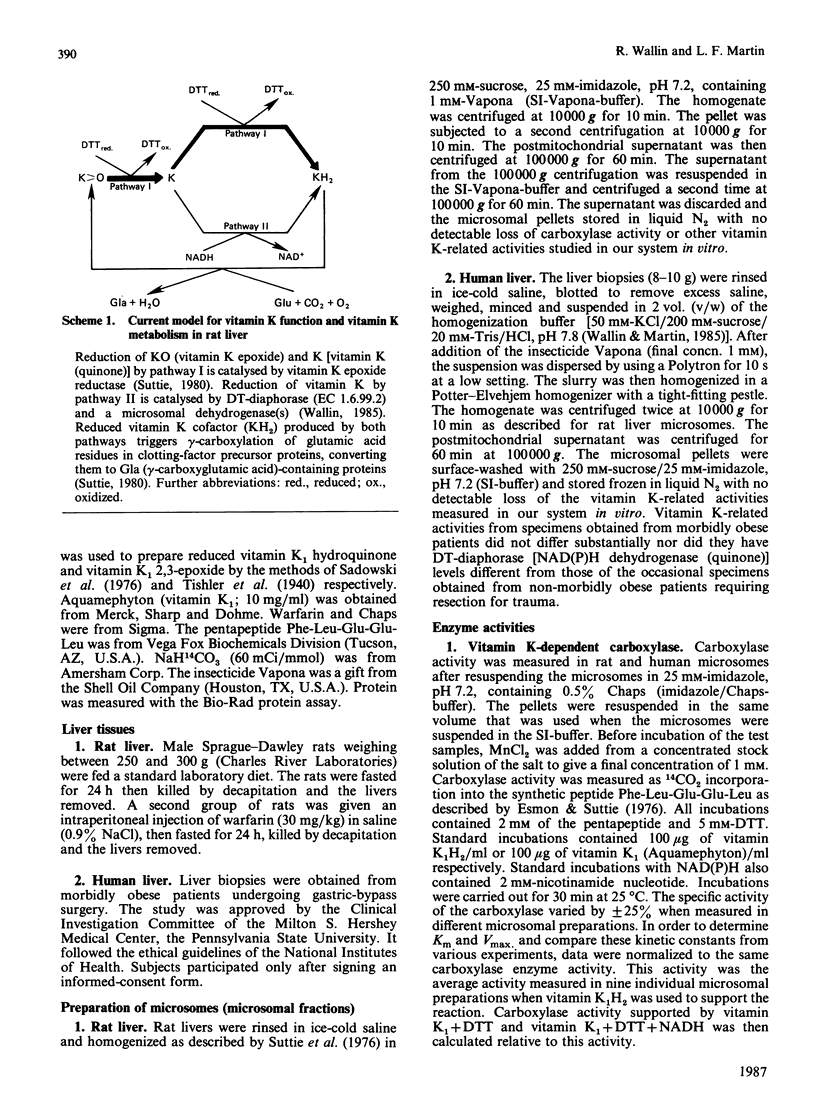
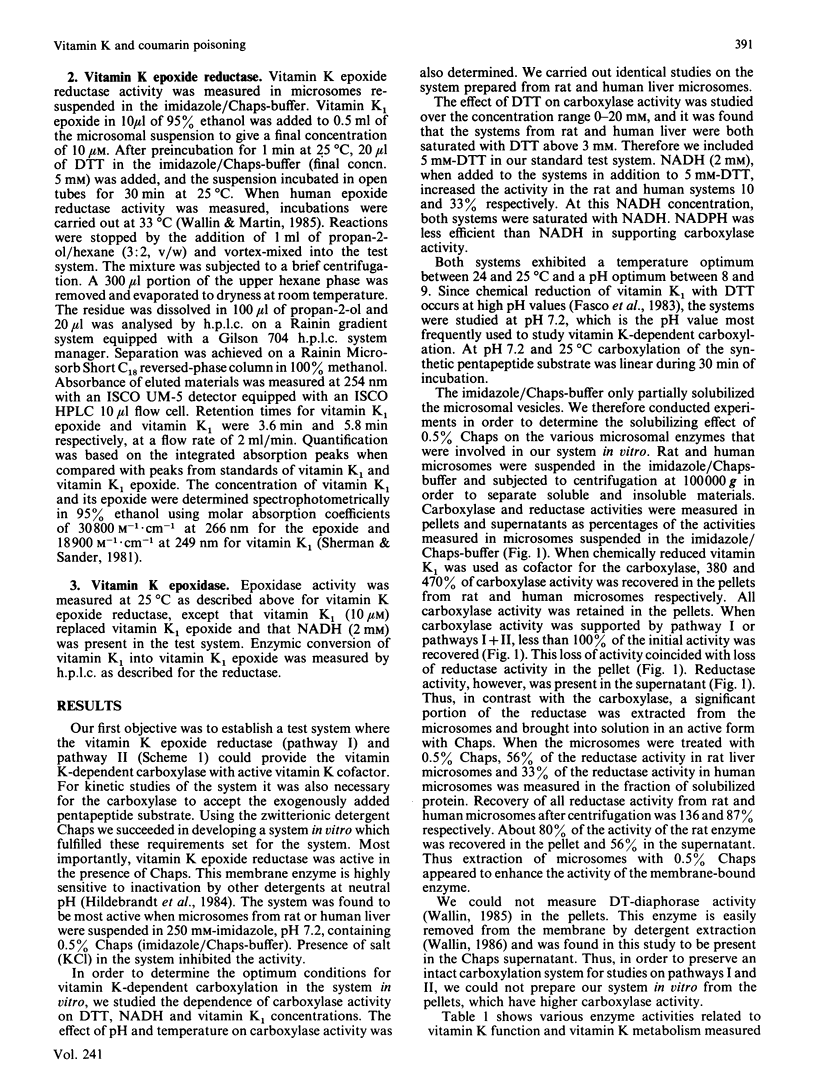
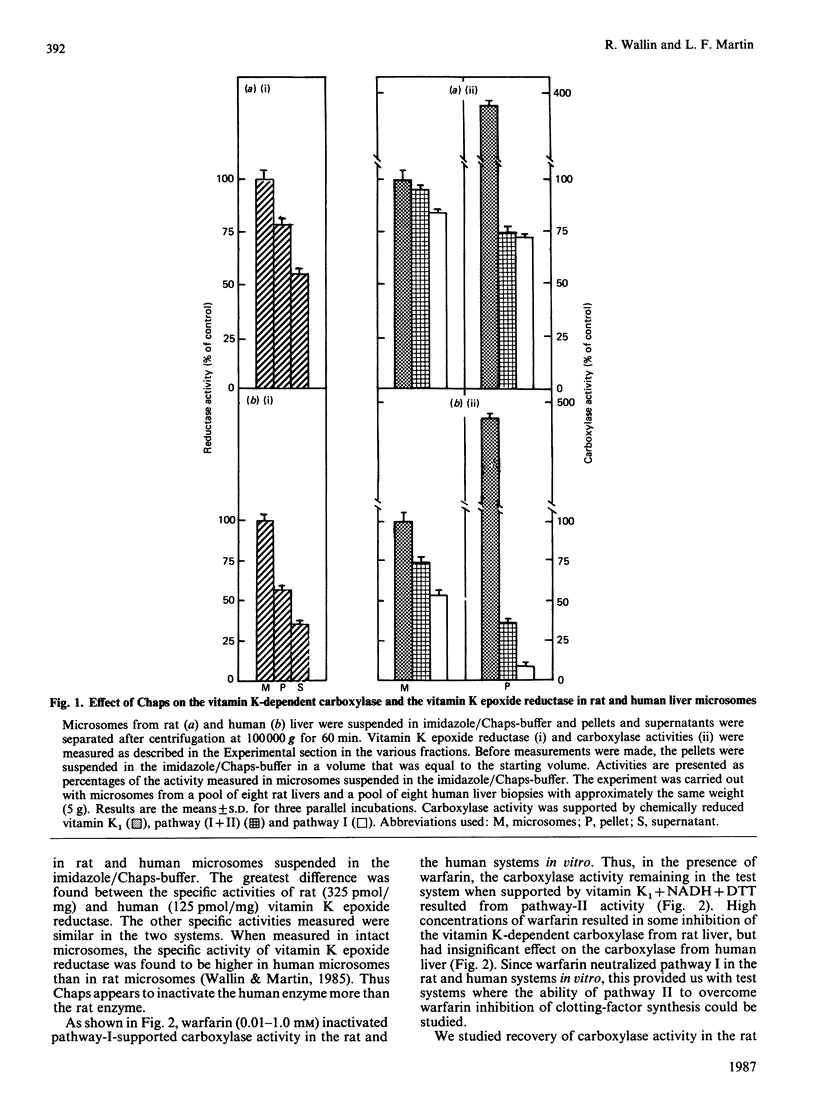
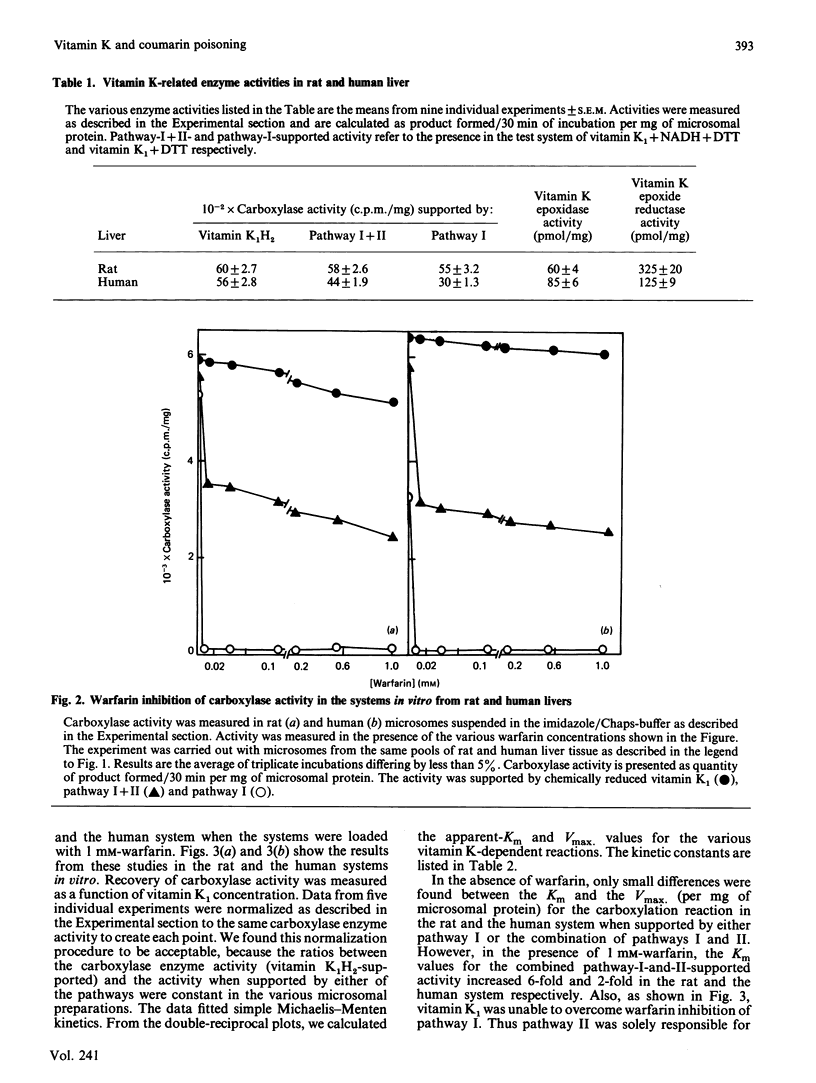
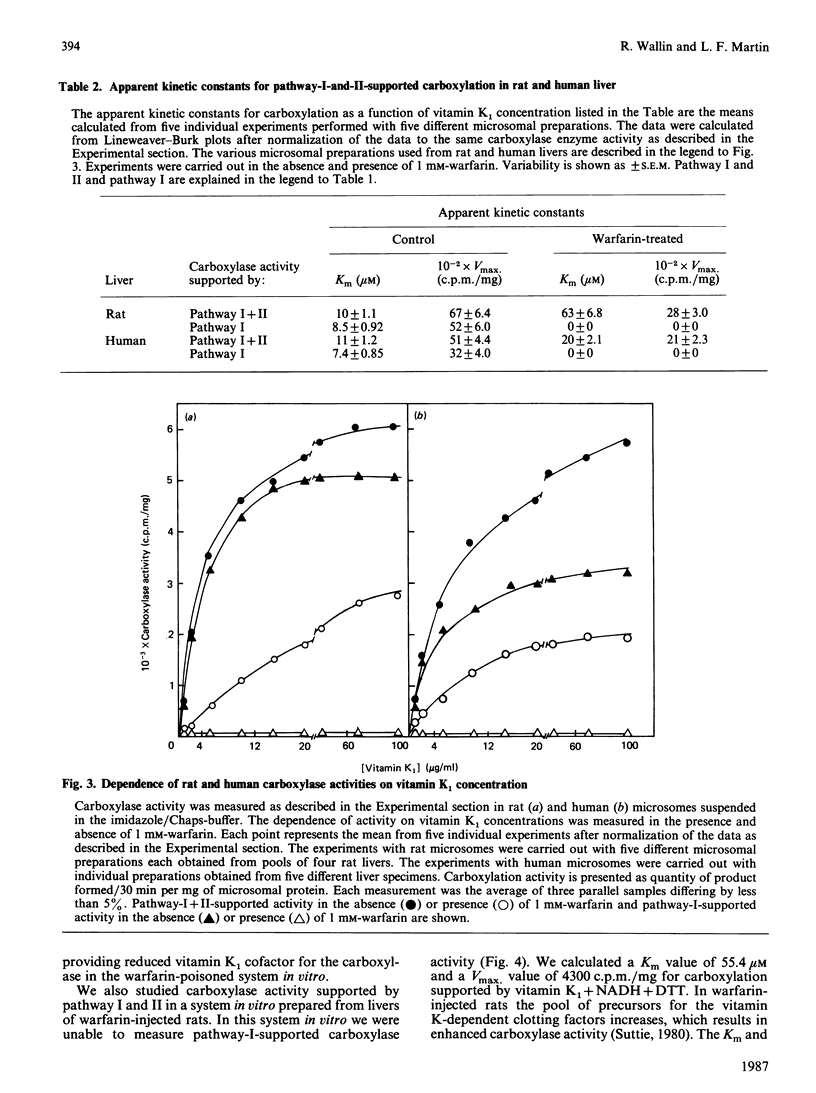
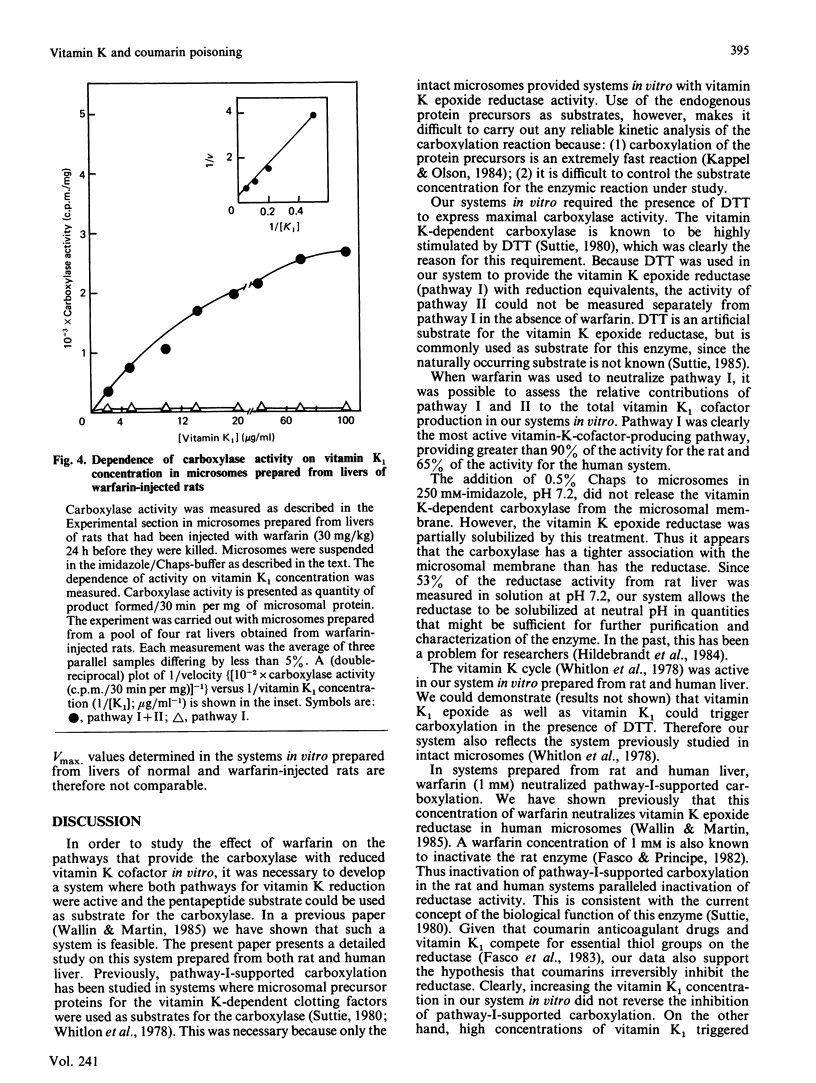
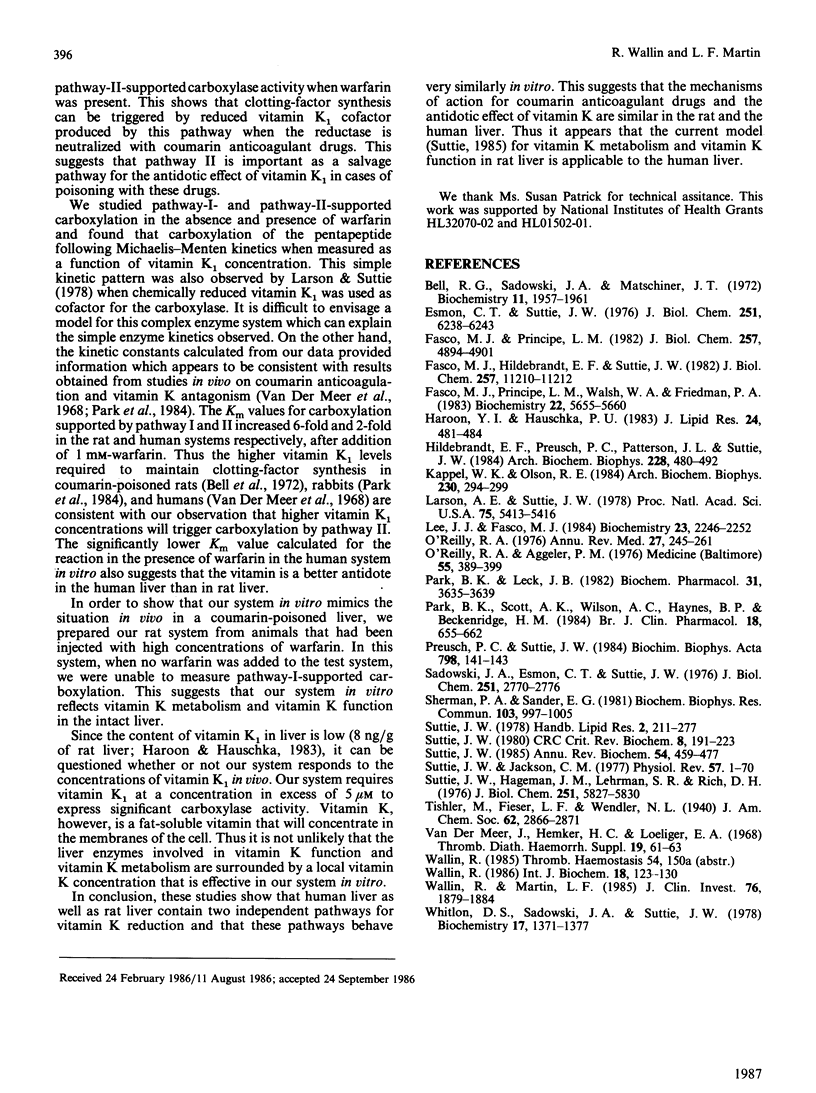
Selected References
These references are in PubMed. This may not be the complete list of references from this article.
- Bell R. G., Sadowski J. A., Matschiner J. T. Mechanism of action of warfarin. Warfarin and metabolism of vitamin K 1 . Biochemistry. 1972 May 9;11(10):1959–1961. doi: 10.1021/bi00760a034. [DOI] [PubMed] [Google Scholar]
- Esmon C. T., Suttie J. W. Vitamin K-dependent carboxylase. Solubilization and properties. J Biol Chem. 1976 Oct 25;251(20):6238–6243. [PubMed] [Google Scholar]
- Fasco M. J., Hildebrandt E. F., Suttie J. W. Evidence that warfarin anticoagulant action involves two distinct reductase activities. J Biol Chem. 1982 Oct 10;257(19):11210–11212. [PubMed] [Google Scholar]
- Fasco M. J., Principe L. M. R- and S-Warfarin inhibition of vitamin K and vitamin K 2,3-epoxide reductase activities in the rat. J Biol Chem. 1982 May 10;257(9):4894–4901. [PubMed] [Google Scholar]
- Fasco M. J., Principe L. M., Walsh W. A., Friedman P. A. Warfarin inhibition of vitamin K 2,3-epoxide reductase in rat liver microsomes. Biochemistry. 1983 Nov 22;22(24):5655–5660. doi: 10.1021/bi00293a031. [DOI] [PubMed] [Google Scholar]
- Haroon Y., Hauschka P. V. Application of high-performance liquid chromatography to assay phylloquinone (vitamin K1) in rat liver. J Lipid Res. 1983 Apr;24(4):481–484. [PubMed] [Google Scholar]
- Hildebrandt E. F., Preusch P. C., Patterson J. L., Suttie J. W. Solubilization and characterization of vitamin K epoxide reductase from normal and warfarin-resistant rat liver microsomes. Arch Biochem Biophys. 1984 Feb 1;228(2):480–492. doi: 10.1016/0003-9861(84)90014-6. [DOI] [PubMed] [Google Scholar]
- Kappel W. K., Olson R. E. Kinetics of carboxylation of endogenous and exogenous substrates by the vitamin K-dependent carboxylase. Arch Biochem Biophys. 1984 Apr;230(1):294–299. doi: 10.1016/0003-9861(84)90110-3. [DOI] [PubMed] [Google Scholar]
- Larson A. E., Suttie J. W. Vitamin K-dependent carboxylase: evidence for a hydroperoxide intermediate in the reaction. Proc Natl Acad Sci U S A. 1978 Nov;75(11):5413–5416. doi: 10.1073/pnas.75.11.5413. [DOI] [PMC free article] [PubMed] [Google Scholar]
- Lee J. J., Fasco M. J. Metabolism of vitamin K and vitamin K 2,3-epoxide via interaction with a common disulfide. Biochemistry. 1984 May 8;23(10):2246–2252. doi: 10.1021/bi00305a024. [DOI] [PubMed] [Google Scholar]
- O'Reilly R. A., Aggeler P. M. Covert anticoagulant ingestion: study of 25 patients and review of world literature. Medicine (Baltimore) 1976 Sep;55(5):389–399. doi: 10.1097/00005792-197609000-00003. [DOI] [PubMed] [Google Scholar]
- O'Reilly R. A. Vitamin K and the oral anticoagulant drugs. Annu Rev Med. 1976;27:245–261. doi: 10.1146/annurev.me.27.020176.001333. [DOI] [PubMed] [Google Scholar]
- Park B. K., Leck J. B. A comparison of vitamin K antagonism by warfarin, difenacoum and brodifacoum in the rabbit. Biochem Pharmacol. 1982 Nov 15;31(22):3635–3639. doi: 10.1016/0006-2952(82)90587-1. [DOI] [PubMed] [Google Scholar]
- Park B. K., Scott A. K., Wilson A. C., Haynes B. P., Breckenridge A. M. Plasma disposition of vitamin K1 in relation to anticoagulant poisoning. Br J Clin Pharmacol. 1984 Nov;18(5):655–662. doi: 10.1111/j.1365-2125.1984.tb02526.x. [DOI] [PMC free article] [PubMed] [Google Scholar]
- Preusch P. C., Suttie J. W. Relationship of dithiothreitol-dependent microsomal vitamin K quinone and vitamin K epoxide reductases inhibition of epoxide reduction by vitamin K quinone. Biochim Biophys Acta. 1984 Mar 22;798(1):141–143. doi: 10.1016/0304-4165(84)90022-9. [DOI] [PubMed] [Google Scholar]
- Sadowski J. A., Esmon C. T., Suttie J. W. Vitamin K-dependent carboxylase. Requirements of the rat liver microsomal enzyme system. J Biol Chem. 1976 May 10;251(9):2770–2776. [PubMed] [Google Scholar]
- Sherman P. A., Sander E. G. Vitamin K epoxide reductase: evidence that vitamin K dihydroquinone is a product of vitamin K epoxide reduction. Biochem Biophys Res Commun. 1981 Dec 15;103(3):997–1005. doi: 10.1016/0006-291x(81)90908-6. [DOI] [PubMed] [Google Scholar]
- Suttie J. W., Hageman J. M. Vitamin K-dependent carboxylase. Development of a peptide substrate. J Biol Chem. 1976 Sep 25;251(18):5827–5830. [PubMed] [Google Scholar]
- Suttie J. W., Jackson C. M. Prothrombin structure, activation, and biosynthesis. Physiol Rev. 1977 Jan;57(1):1–70. doi: 10.1152/physrev.1977.57.1.1. [DOI] [PubMed] [Google Scholar]
- Suttie J. W. Mechanism of action of vitamin K: synthesis of gamma-carboxyglutamic acid. CRC Crit Rev Biochem. 1980;8(2):191–223. doi: 10.3109/10409238009105469. [DOI] [PubMed] [Google Scholar]
- Suttie J. W. Vitamin K-dependent carboxylase. Annu Rev Biochem. 1985;54:459–477. doi: 10.1146/annurev.bi.54.070185.002331. [DOI] [PubMed] [Google Scholar]
- Wallin R., Martin L. F. Vitamin K-dependent carboxylation and vitamin K metabolism in liver. Effects of warfarin. J Clin Invest. 1985 Nov;76(5):1879–1884. doi: 10.1172/JCI112182. [DOI] [PMC free article] [PubMed] [Google Scholar]
- Wallin R. Rat liver vitamin K-dependent carboxylase: a study of antibodies raised against partially purified preparations of the enzyme. Int J Biochem. 1986;18(2):123–130. doi: 10.1016/0020-711x(86)90143-6. [DOI] [PubMed] [Google Scholar]
- Whitlon D. S., Sadowski J. A., Suttie J. W. Mechanism of coumarin action: significance of vitamin K epoxide reductase inhibition. Biochemistry. 1978 Apr 18;17(8):1371–1377. doi: 10.1021/bi00601a003. [DOI] [PubMed] [Google Scholar]


